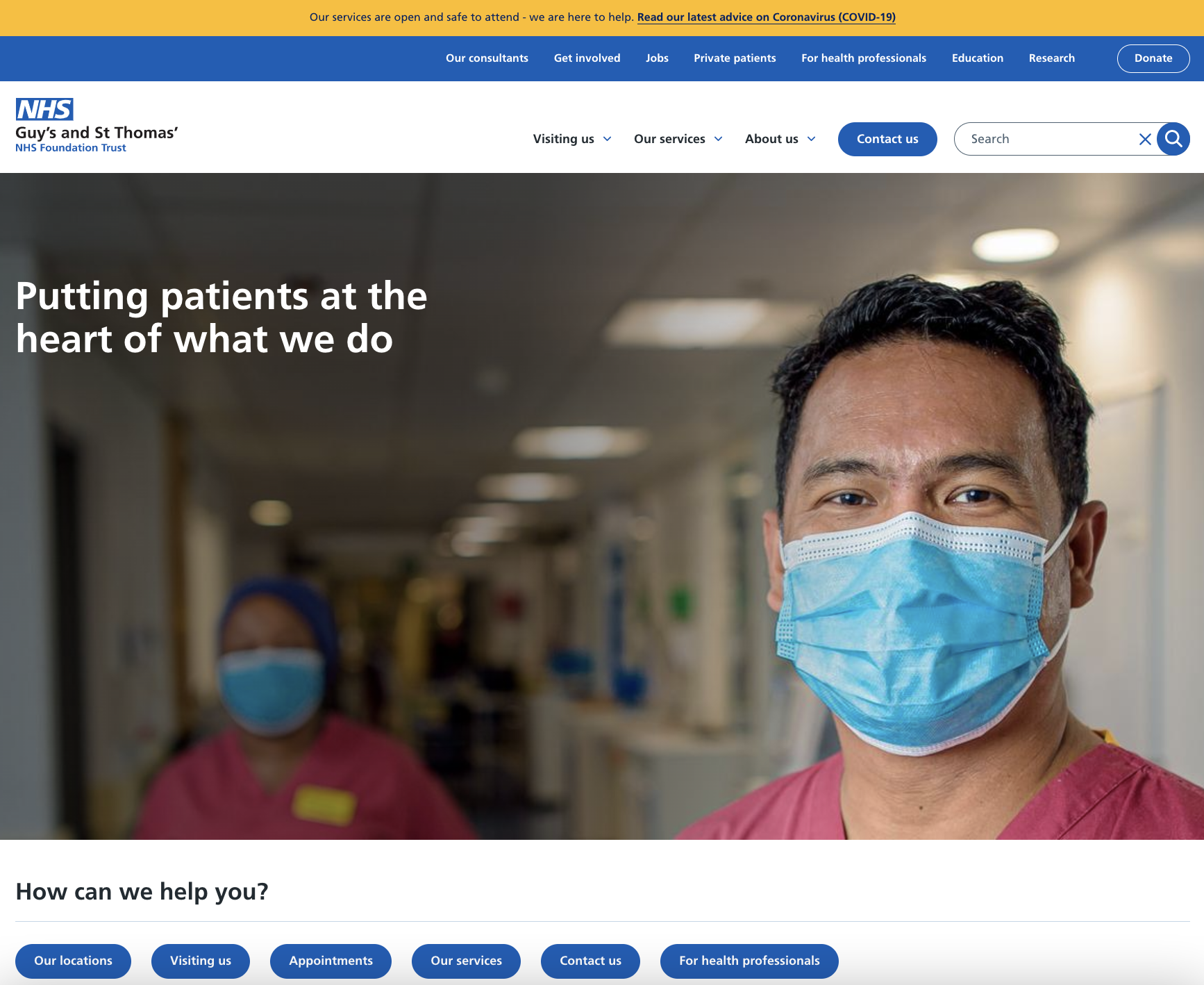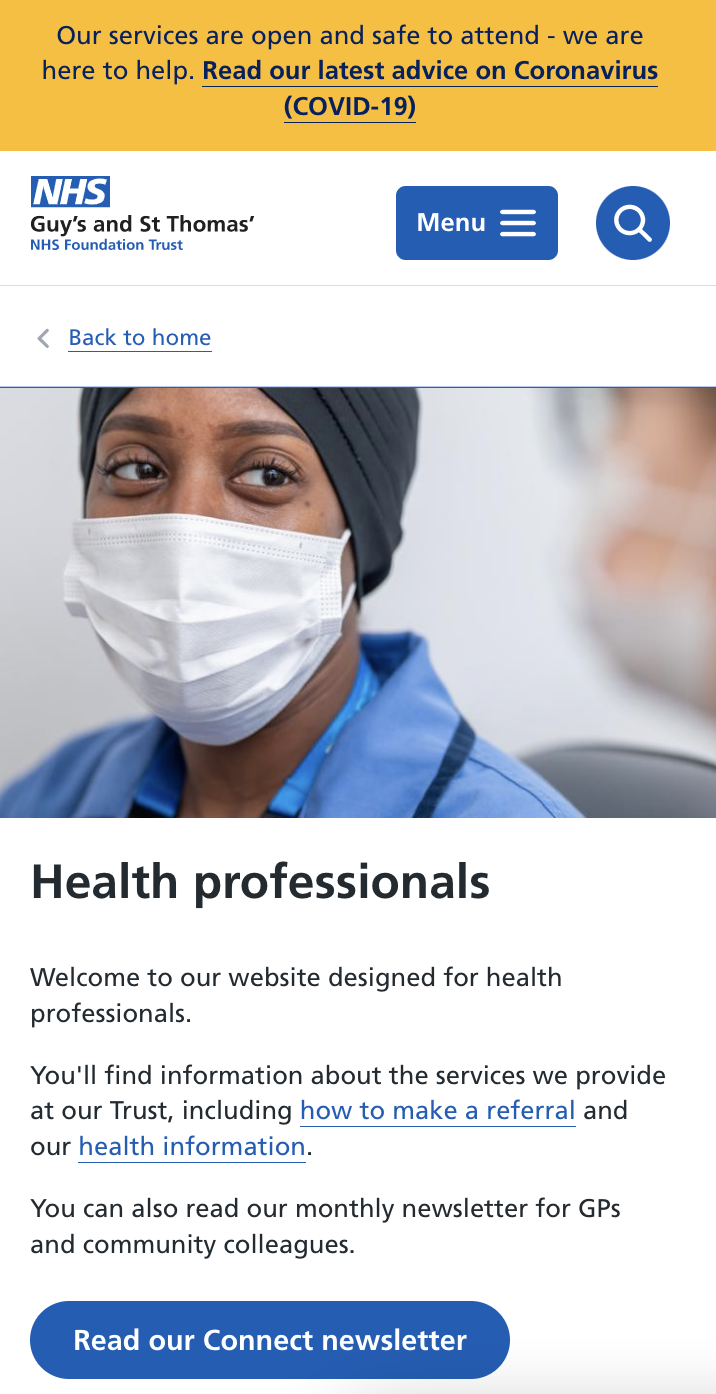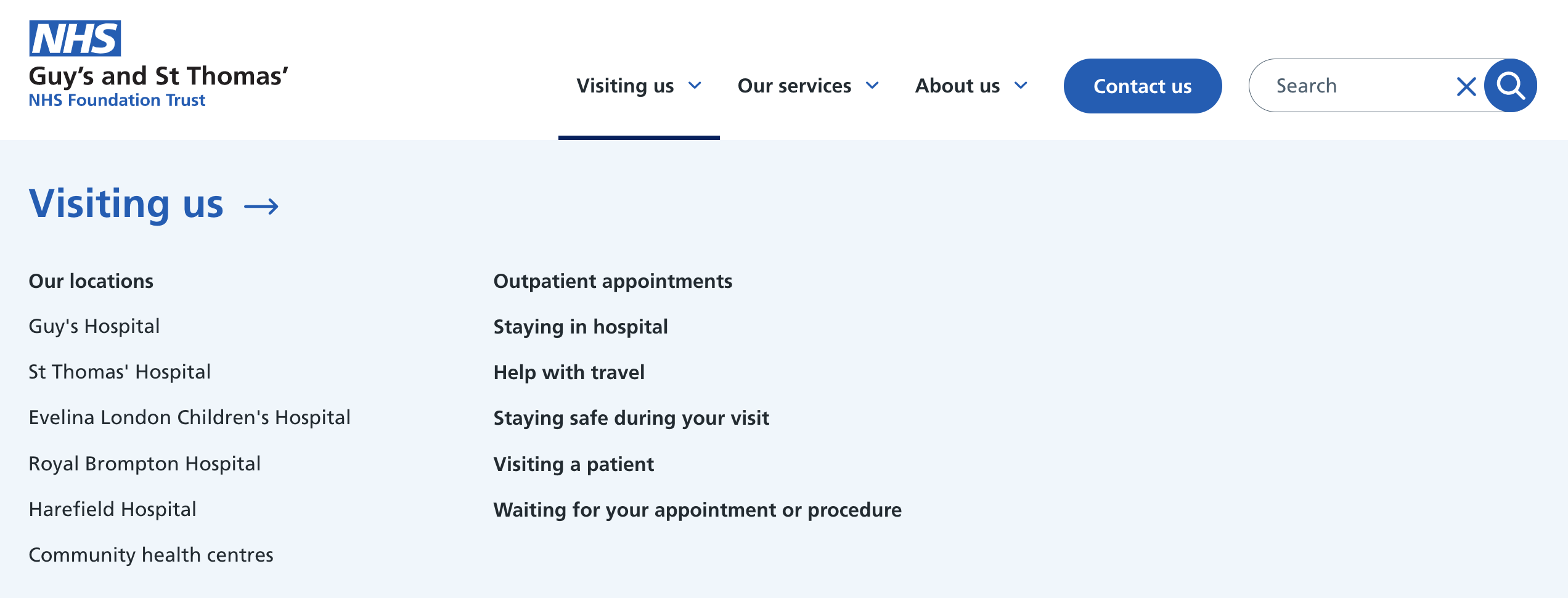With over 18,000 staff, treating three million patients a year, Guy’s and St Thomas’ (GSTT) is one of the biggest and most well-known NHS Trusts in the UK. Transforming digital experiences has been at the heart of the website update
With a growing organisation and staff continuously adding content over the years, the site had become overloaded with information, making it increasingly difficult for patients to find what they needed. The COVID pandemic made this problem even more conspicuous, increasing GSTT’s need for a professional and flexible site that worked for their patients. The updated website is now streamlined and accessible, transforming digital experiences of patients across the UK.
Transforming digital experiences by designing around the needs of users
The transformation of the GSTT website started with a Discovery phase spanning three months. The purpose of discovery was to get a clearer understanding of the issues for the different groups of GSTT users. Although the organisation had some understanding of the problems of the problems with the current website, they wanted to ensure that the new website was designed around the needs of users.
This started with focus groups internally to understand what corporate and clinical staff thought the issues were. Staff were very in tune with patient needs and frustrations and understood the value of improving the digital experience to help patients. For example, once they designated COVID information pages on the website, calls to the Trust reduced by 50% within days.

These focus groups also helped develop the initial user journeys to test. This was explored through three iterations of one-to-one interviews, observing how patients navigated the website. Ensuring the new website was able to cater to all users, regardless of physical, cognitive or any other disability, was of paramount importance. Zoocha have made sure that a high proportion of the users interviewed and tested had a range of accessibility needs, including screen readers and those living with visual and cognitive impairments and chronic conditions.
It was also interesting to compare patients who were new to the hospitals or had only been a handful of times to those who had a long relationship with the trust. The latter likely knew the hospitals intimately. However, even those who had visited regularly had to learn ways of navigating the site and still struggled to find the information they needed.

Six clear website behaviours emerged
In addition to the qualitative research, we undertook quantitative research in the form of a survey to get a broader coverage of users and develop a more robust overview of their needs. Overall Zoocha engaged with 780 people, representing a mix of the varied GSTT audience.
The findings of discovery were collated into 6 clear behaviours:
- Contact – I’m looking to find contact details
- Appointment – I’m looking for appointment details
- Travel – I’m looking at how to get to the hospital
- Wayfinding – I want to know how to get around when I am at the hospital
- Consultant – I’m looking for consultant details
- Information – I’m looking for other specific information

These behaviours were aligned with the 40 distinct user needs statements, which were later used to inform the acceptance criteria for developing the new website. With this full understanding of the audience’s needs and goals, we could develop and test a new website structure, navigation principles and content design. As a complete website redesign, everything was new and so everything was tested. From card sorting and tree testing for the website structure, to interviews with prototypes for the pages and content, we tested our assumptions and design iterations at each stage of the project. This ensured the users’ needs were at the core of the new website, and that in future, the website wouldn’t get overloaded with content, like the previous one had done.
The overall patient led approach was crucial to this project’s success. For patients to know that their views and needs were being taken on board was very important to both them and GSTT. Throughout the process, none of the people spoken to ever doubted the quality of the care they received and wanted the website to reflect that.
Enhancing Digital Publishing
Zoocha leveraged the content management power of Drupal in order to provide editors with flexibility tools for building content using reusable components. This means that content managers are not restricted by fixed page templates and can build tailored content experiences for any purpose, while guaranteeing that the content is always accessible and mobile responsive across the website.
In order to manage the large volume of content on the website, editors frequently need to reference older revisions of the content when making updates. Drupals ‘Diff’ module enabled an elegant way of navigating through content history for content managers.
Zoocha also implemented an additional layer of functionality on top of the ‘Diff’ module, taking inspiration from another Drupal module ‘preview_link’, giving editors the ability to privately share unpublished content with external stakeholders in order for them to review the content before being made public.
Another implication of the vast amounts of content is enabling users to search the site easily and quickly find the most relevant content for the search terms they have entered. Drupals search API module in conjunction with Apache Solr provides a fast and accurate search experience for website users. It also enables website administrators to fine tune the ranking of different content types so that the most important pages will always appear at the top of the search results. The search user experience was further enhanced with features that would provide a natural way to browse even the most niche section of the website, such as:
- autocomplete
- spellcheck
- synonyms











